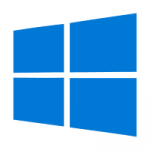 The latest Firefox fixes a handful of bugs, eleven of them security vulnerabilities, ranging in impact from low to critical.
The latest Firefox fixes a handful of bugs, eleven of them security vulnerabilities, ranging in impact from low to critical.
New in Firefox 64.0 is the ability to select and manipulate multiple tabs. Hold the Ctrl or Shift key while clicking to select several tabs, then right-click one of the tabs to see some new actions in the context menu. Unfortunately, there’s no visual indication of which tabs have been selected, making this otherwise helpful feature somewhat awkward to use. You can at least see how many tabs you have selected in the context menu, in the Send n Tabs To Device entry.
Firefox’s Task Manager, which you can show by navigating to about:performance, now shows the amount of power being used by each tab and Add-On. This should be very handy for mobile device users.
Starting with Firefox 64.0, TLS certificates issued by Symantec are no longer trusted. You’ll only notice this if you visit a web site that still uses a certificate from Symantec.
The special page about:crashes is improved in Firefox 64.0: it’s now clear when a crash is being submitted to Mozilla, and that removing crashes locally does not remove them from the Mozilla crash stats page.
The release notes for Firefox 64.0 have more details.
 boot13
boot13 It’s the second Tuesday of the month, so it’s once again time to play Patch Or Else, brought to you by Microsoft and Adobe.
It’s the second Tuesday of the month, so it’s once again time to play Patch Or Else, brought to you by Microsoft and Adobe.  Adobe’s contribution to the patch pile this month is a new version of Adobe Reader. The new Reader includes fixes for at least eighty-seven vulnerabilities, many having Critical severity. The
Adobe’s contribution to the patch pile this month is a new version of Adobe Reader. The new Reader includes fixes for at least eighty-seven vulnerabilities, many having Critical severity. The  According to the
According to the  By now you’re probably aware that the push to connect everything to the Internet has been at the cost of security. Many IoT (Internet of Things) devices are poorly secured and can expose users to significant threats. I always encourage people to consider whether they really need their toaster to be connected to the Internet, and disable that feature if the answer is no.
By now you’re probably aware that the push to connect everything to the Internet has been at the cost of security. Many IoT (Internet of Things) devices are poorly secured and can expose users to significant threats. I always encourage people to consider whether they really need their toaster to be connected to the Internet, and disable that feature if the answer is no. Last month, after users reported file deletion issues, Microsoft took the Windows 10 October Update offline. Yesterday, the (now fixed) update was again
Last month, after users reported file deletion issues, Microsoft took the Windows 10 October Update offline. Yesterday, the (now fixed) update was again  Meanwhile, Adobe released new versions of Flash and Reader.
Meanwhile, Adobe released new versions of Flash and Reader.